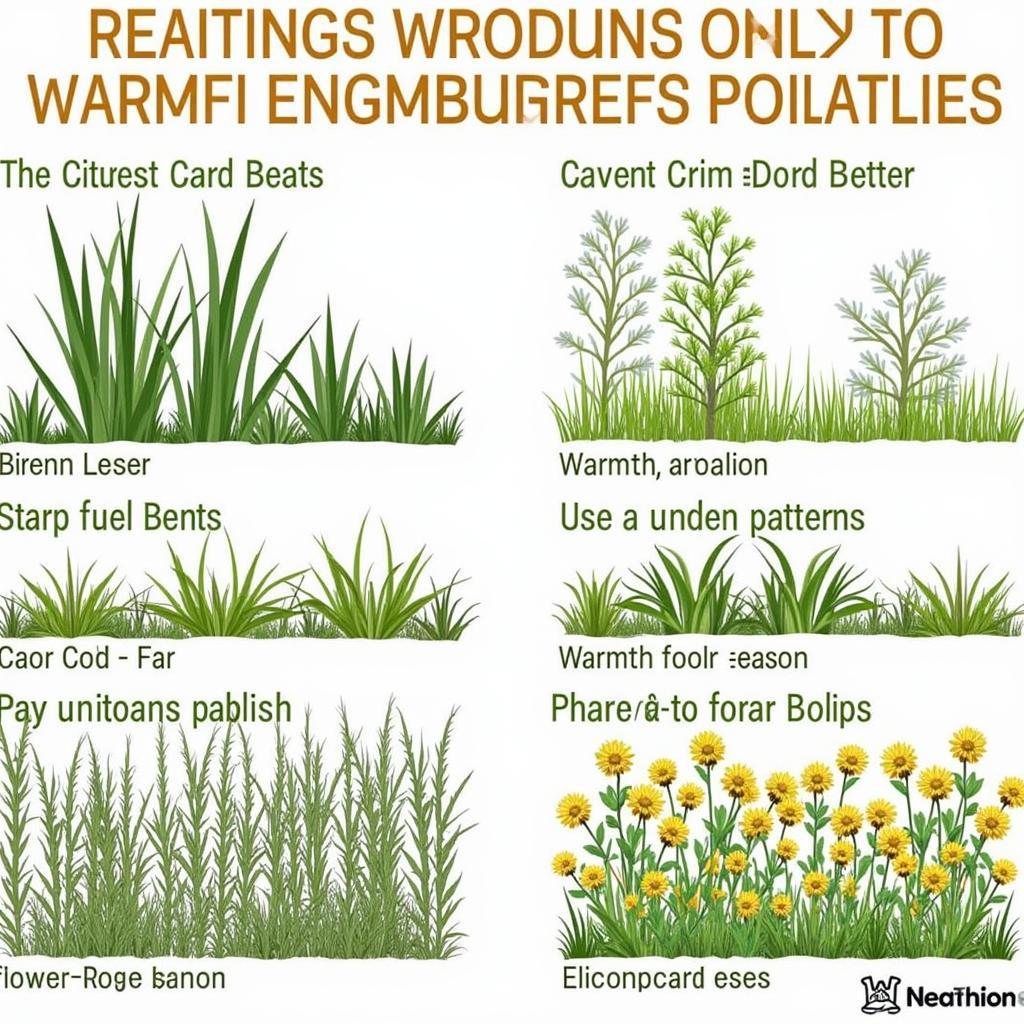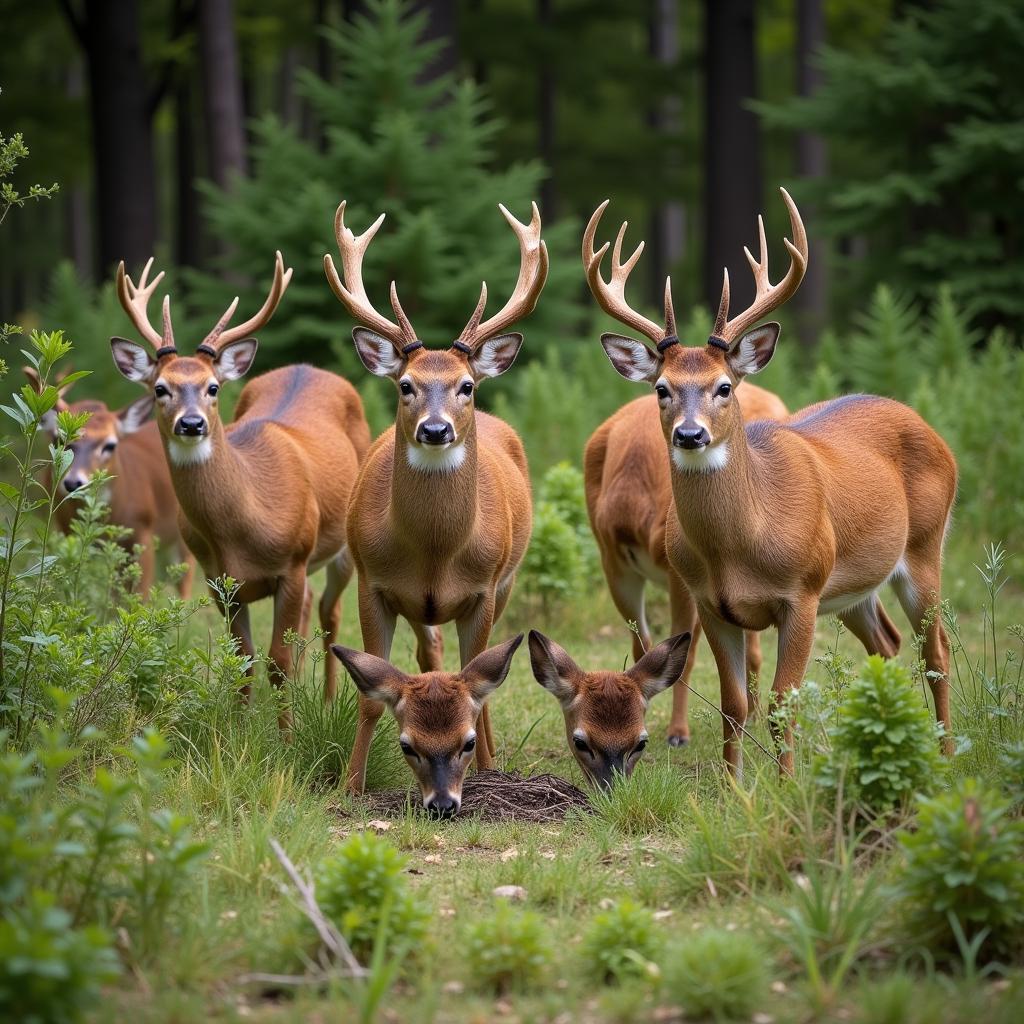Timing is everything when it comes to planting a successful food plot. Choosing the right Food Plot Planting Dates ensures your seeds germinate properly and the plants have ample time to establish themselves before the harsh weather hits. This comprehensive guide will explore everything you need to know about food plot planting dates, empowering you to create a thriving food source for wildlife.
 Food Plot Planting Calendar
Food Plot Planting Calendar
Factors Influencing Food Plot Planting Dates
While a universal planting calendar is helpful, several factors can influence the ideal planting time for your specific location and food plot goals.
1. Geographic Location and Climate
Different regions experience varying temperatures, frost dates, and rainfall patterns. It’s crucial to consult a local planting calendar or speak with experts at your local agricultural extension office to determine the average frost dates and recommended planting windows for your area.
2. Food Plot Species
Different plants have different growth habits and require varying lengths of time to mature. Cool-season crops like clover and chicory are best planted in early spring or late summer, while warm-season options such as soybeans and corn thrive when planted after the last frost.
 Cool Season vs. Warm Season Food Plots
Cool Season vs. Warm Season Food Plots
3. Soil Temperature
Soil temperature plays a crucial role in seed germination. Most seeds require a minimum soil temperature to germinate successfully. Using a soil thermometer to check the temperature at the recommended planting depth ensures optimal conditions for germination.
4. Hunting Season
If you’re planting food plots to attract game during hunting season, timing your planting to coincide with peak hunting periods is essential. Understanding the feeding patterns of your target species will help you determine the ideal time to establish your food plot for maximum attraction.
Understanding Planting Windows
Planting windows refer to the periods throughout the year when conditions are most favorable for planting specific food plot species. These windows consider temperature, rainfall, and daylight hours, optimizing the chances of successful establishment and growth.
-
Spring Planting: Early spring, after the last frost, is an excellent time to plant warm-season annuals like soybeans, lablab, and cowpeas. This allows them ample time to establish and produce forage before fall.
-
Late Summer Planting: Late summer, typically 6-8 weeks before the first frost, is ideal for planting cool-season annuals and perennials. This window allows for adequate root development before winter dormancy.
-
Fall Planting: In regions with milder winters, fall planting of cool-season annuals like winter wheat, oats, and rye provides valuable forage throughout the winter months.
Tips for Successful Food Plot Planting
-
Soil Testing: Before planting, conduct a soil test to determine the pH and nutrient levels. This information allows you to amend the soil accordingly, ensuring optimal growing conditions.
-
Proper Seedbed Preparation: Creating a firm, weed-free seedbed is crucial for successful germination and establishment. Clear any existing vegetation and till the soil to a depth of 6-8 inches.
-
Planting Depth and Spacing: Follow the recommended planting depth and spacing guidelines on the seed packet. Planting too deeply or shallowly can inhibit germination.
-
Weed Control: Implement a weed control strategy to prevent competition for sunlight, nutrients, and water. This may involve pre-planting herbicides, post-emergent applications, or hand-weeding.
-
Watering: Provide adequate moisture for germination and early plant growth, especially during dry periods. Consider using irrigation methods if natural rainfall is insufficient.
 Deer Feeding in Lush Food Plot
Deer Feeding in Lush Food Plot
Choosing the Right Food Plot Species
Selecting the right food plot species depends on your location, soil type, and the nutritional needs of the wildlife you aim to attract. Some popular choices include:
-
Best Food Plots for Deer in MN: In Minnesota’s climate, a blend of brassicas like turnips and radishes, along with winter rye and clover, can provide year-round attraction for deer. For specific recommendations, check out our guide on best food plots for deer in mn.
-
Best Food Plot Seeds for Deer: When selecting seeds, consider opting for varieties specifically bred for deer palatability and nutritional content. Explore our recommendations for best food plot seeds for deer to make informed choices.
-
Fall Food Plot Mixtures: Planting fall food plot mixtures ensures a diverse and attractive food source for deer throughout the fall and winter months.
-
Food Plots for Deer in Spring: During spring, providing readily available and highly digestible forage is crucial. Explore our guide on food plots for deer in spring to discover suitable species.
-
Roundup Ready Food Plot Seed: If weed control is a concern, consider using roundup ready food plot seed. This technology allows for targeted weed control without harming the desired food plot species.
Conclusion
By understanding the factors influencing food plot planting dates and implementing the tips outlined in this guide, you can significantly increase your chances of establishing thriving food plots that attract and nourish wildlife year after year. Remember to consult local resources, choose suitable species, and prioritize proper planting techniques for optimal success.